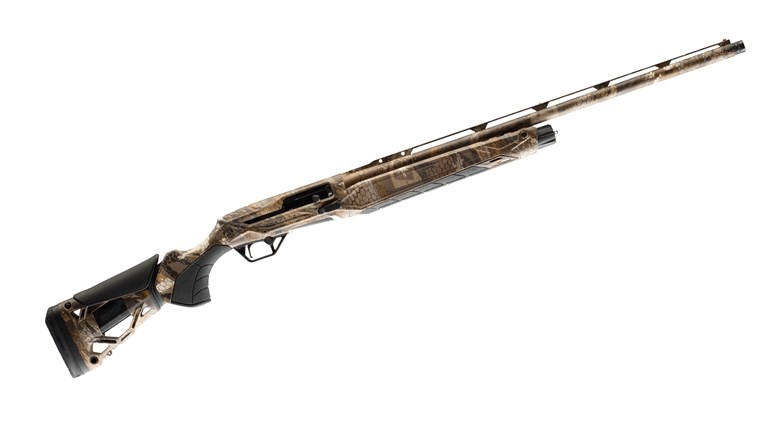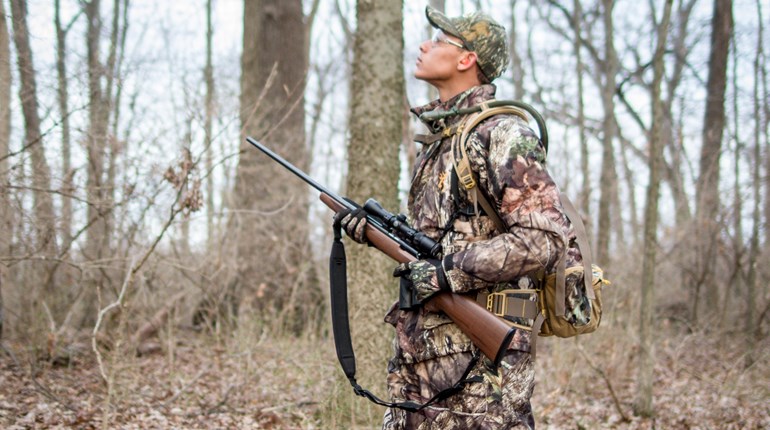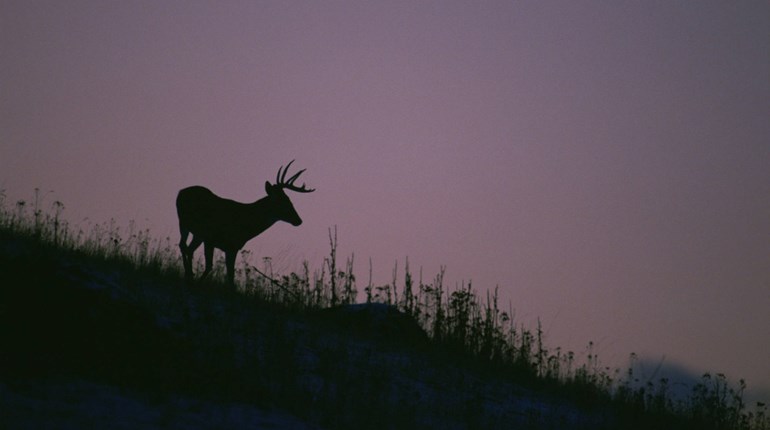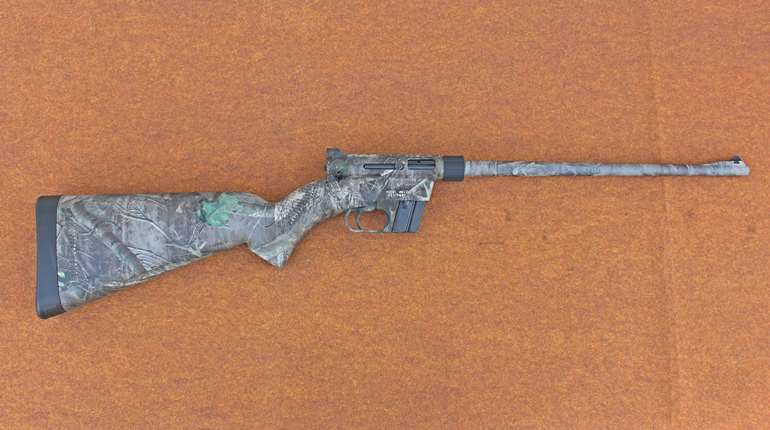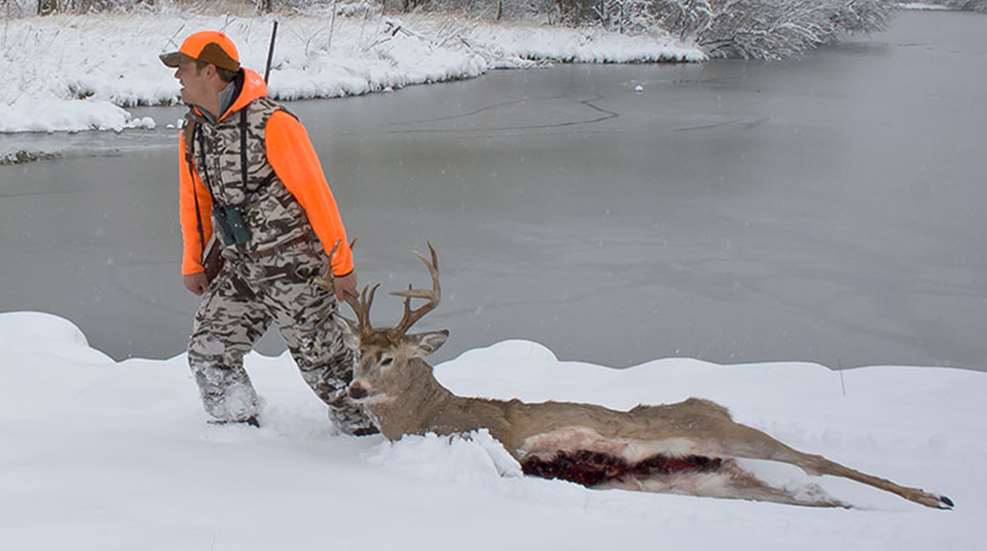
Sometimes old bucks outsmart themselves. Craig Dougherty once showed me where he killed a big, mature 10-pointer in western New York that outsmarted itself in the late season. The buck had been hiding by day in a 2-acre patch of brush alongside food plots. The 2-acre section was one of the areas the Doughertys marked as “no entry” (they actually had signs made up and nailed to trees). So, even though the off-limits area was tiny, the buck felt comfortable in it as no one ever went in there. It was also right alongside food—a big deal for a buck recovering from losing 30 percent of its weight during the rut.
One cold, snowy, mid-December afternoon, the buck crept out of its gnarly 2 acres before dark and slyly went downwind of three stands, one at a time, each of which watched the smaller food plot. (Craig’s son, Neil, later backtracked the buck in the snow to figure this out.) The buck, certain it was safe, then started to feed. Craig was watching a different food plot, but he could just see a sliver of the smaller plot through the trees. The buck happened to feed right through this section, giving Craig a shot.
This is more than a late-season success story. The big buck’s intelligence, and its mistake, point to four keys to killing others like it before time runs out.
Find His Favorite Food
If you have snow, any at all, the late season can be a surprisingly easy time to scout. Deer will be on bed-to-feed patterns and will often congregate on the best local food sources. The trouble is being careful not to bump the deer you intend to hunt, as they’ll often be bedded much closer to food sources now. The hunting pressure has likely slackened or even ended. The deer are settling down, and the bucks are particularly hungry.
Food sources might be cut crop fields, corn left standing, or areas on south or southwest-facing slopes where early snow has melted to expose acorns and forbs. Consider not hunting for a day or two as you scout for food sources being actively used.
“Almost all my late-season hunters fill their tags, and they often take our biggest bucks because we don’t pressure our late-season food plots—mostly brassicas—until late-season conditions are ideal,” says Ryan Bland, owner of Non-Typical Outfitters in Illinois, one of the outfitters vetted by NRAOutdoors.com.
Late-Season Bonus Tip: A December bonus to a late-season hunt is possible rut activity. Often the “fawns” (does that were born last spring) will come into estrus about 28 days after the primary peak of the rut. An older and wiser doe will typically lead, or go with, a buck to some secluded, thick area and stay there for 24-36 hours. But an inexperienced 6-or-so-month-old doe will often drag a buck or bucks with it to popular food sources during daylight. Keaton Kelso, owner of K&K Outfitters in Kansas (another NRA Outdoors outfitter), says, “The mature bucks know better, but they have something else on their minds.”
Be Careful in Core-Area Cover
Dougherty’s buck was doing something mature bucks do when they are pressured. They rarely leave their chosen range when hunting pressure gets intense; they simply move less in daylight and lay up in places where experience has taught them we don’t (or can’t) go. Finding these places and, when possible, carefully hunting entry and exit routes with the wind blowing your scent away from where the buck sleeps (evenings are typically more productive than mornings at this time of the year) is the safe and smart way to go.
Also realize that GPS-collar studies have found that bucks often get up and move around their core areas during the day to feed or even to search for late-estrus does. This means being on stand in a bedding area, or better yet with a view into one, during midday is a smart idea.
Late-Season Bonus Tip: A last-ditch tactic is to sneak into a buck’s bedroom an hour or more before first light and wait. The conditions must be perfect, and you should only do this as a final effort before the season ends or you move on to another area.
Watch the Weather
Weather shifts often get deer moving. When a cold front is pushing in and snow is coming or even falling, get out there. If hunting pressure is low enough, you can watch a food source, but typically the best tactic is to wait in a travel corridor as close to a buck’s likely bedding area as you can get. It was a cold, snowy day that got Dougherty’s buck feeding before dark.
Late-Season Bonus Tip: This is anecdotal, but many of my best late-season hunts have come during midday when winter relents for a day or two. When weeks of deep cold are broken by a warm front, the whole forest seems to get up and stretch in the sun.
Organize a Push
Pushing a buck’s security cover is a last resort, but after a season of hunting low-impact it has this cathartic air about it. When dealing with smart, old bucks it is best to keep these deer drives small—just one or two drivers and as many standers. Have the standers still-hunt to their posts along escape routes, not to the obvious avenues leading to open country but to the places where a buck can double back into more thick cover. With the standers in position, one or two drivers should move in slowly.
If a buck is jumped, it’ll run until it’s out of sight and then slow down. That’s where standers should be. More likely, the buck will get up and slip away by turning back into the cover, so consider having a person still-hunt behind or to the side of the drivers. Safety is paramount during a push, and everyone must choose their shots wisely and with regard to the other hunters in the group.
Late-Season Bonus Tip: Access is often the hardest part to getting to a late-season buck’s hideout. In suburbia they’ll often lay up right behind someone’s home. The best method I’ve found for getting access to these little properties is to show up with my bow in hand. Homeowners look at my compound bow, not at me. They are intrigued, not threatened. My state—and many others—have late bow seasons that come after the regular season. This presents an opportunity to hunt evenings for a mature buck that thinks it made it through another season.












